Below is a selection of photos with off camera flash on Slieve Gullion using a Fujifilm X camera.
I’ve been taking a serious look at mirrorless camera bodies, with a camera upgrade imminent. While Nikon have a new full frame mirrorless camera body due soon, the main current options are from Sony and Fujifilm.
A few weeks ago a photography friend gave me the loan of his Fujifilm XT1 to try. It came with a 56mm f1.2 lens, a 16-55mm f2.8, and a 55-140 f2.8. These cropped sensor focal equivalent lenses gives me the same range as my full frame Nikon lenses.
The two big sticking points for me on a Fujifilm x mirrorless camera are the cropped sensor, and low light performance. Having now used the XT1 in studio and location a few times, I’d say I can easily live with a cropped sensor, especially with the great equivalent focal length lenses from Fujifilm. What I may struggle with though is the low light performance. Any copped sensor camera wont have the low light performance of a full frame, because there’s simply a smaller surface area of the sensor to collect light. This is a big issue for me coming from a Nikon D3s which is a camera renowned for its low light/high ISO performance.
There are many upsides to Fujifilm X series cameras however, and these include being lightweight, smaller than a bulky DSLR body, a what you see is what you get EVF, and there’s just something so nostalgic and fun about the experience of having manual dials and rings for aperture, shutter speed and ISO. It’s like being back in the pre millennium film era. I don’t underestimate the importance of the user experience of a camera. It’s quite difficult to explain, and many have already made this point. There truly is something just plain good fun and very rewarding about using a Fujifilm X camera. I thoroughly enjoy using it and I’ve found myself reaching for the Fujifilm camera, leaving my Nikon D3s in the bag. I think that’s telling me something!
I’ll post some studio work here soon using the Fujifilm, but for now here’s some location off camera flash on Slieve Gullion using a Fujifilm X camera.
Thanks to Emily for modelling for the evening.
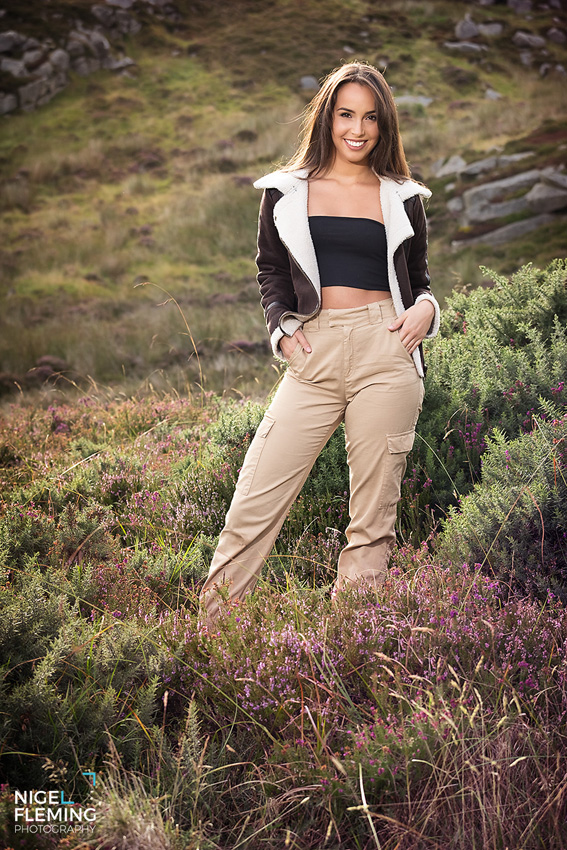 This was using the 16-55mm lens (24-70 full frame equivalent) at f4. Sun was used as a backlight on Emily, and an unmodified off camera flash for fill light from the front.
This was using the 16-55mm lens (24-70 full frame equivalent) at f4. Sun was used as a backlight on Emily, and an unmodified off camera flash for fill light from the front.
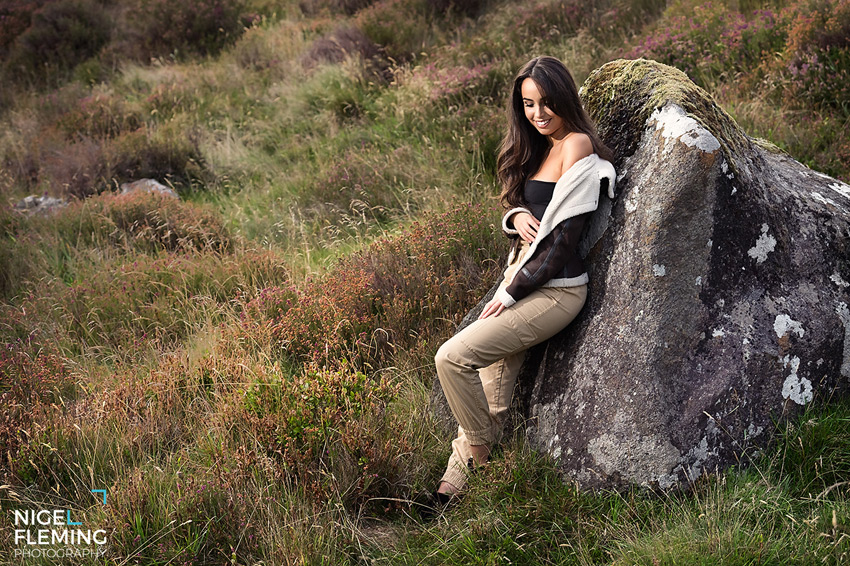 This was our second setup of the evening, and just across the road. Exactly the same setup and settings as previously.
This was our second setup of the evening, and just across the road. Exactly the same setup and settings as previously.
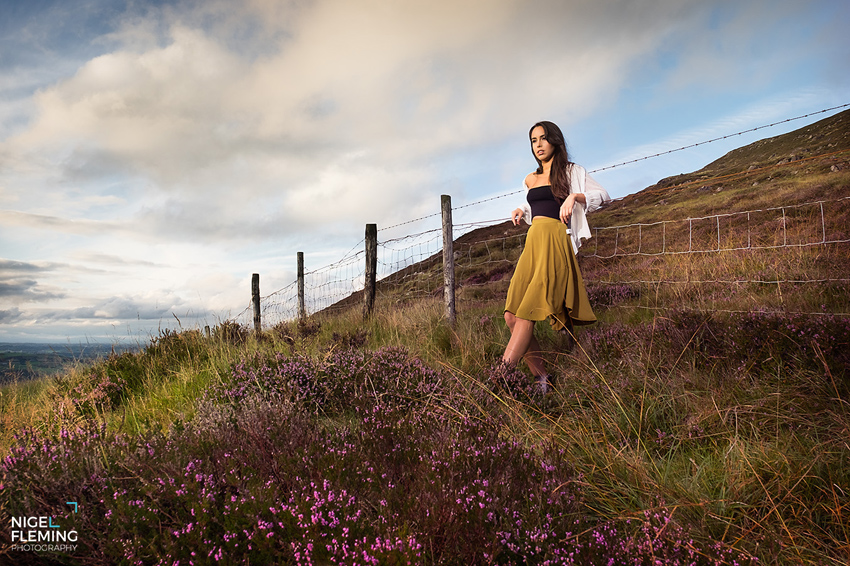 A short drive on around the mountain road and we came to this location. This was up on the mountainside and f8 on the 16-55mm lens. An unmodified off camera flash was added from the front to light Emily. I was using unmodified flash mainly because of stiff gusts of wind from time to time, and I didn’t have an assistant with me to hold the flash. An unmodified flash is much less likely to blow over than with a soft box fitted.
A short drive on around the mountain road and we came to this location. This was up on the mountainside and f8 on the 16-55mm lens. An unmodified off camera flash was added from the front to light Emily. I was using unmodified flash mainly because of stiff gusts of wind from time to time, and I didn’t have an assistant with me to hold the flash. An unmodified flash is much less likely to blow over than with a soft box fitted.
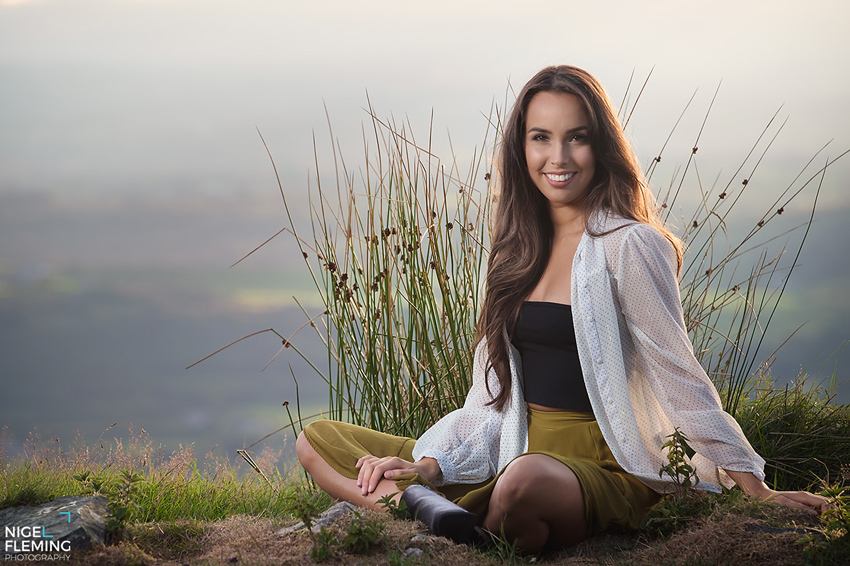 This was my first chance to try out the 50-140mm lens. This lens is equivalent to my 70-200 f2.8. This is my favourite lens and the lens which ‘lives’ on my Nikon D3s. I used the Fujifilm 55-140mm lens here at the 140 end and at f4. F4 is my favourite ‘go to’ aperture for portraiture on my 70-200 lens, and because I love the f4 look on the lens, I’ll always try to get a shutter speed/ISO combo to make f4 work for the exposure. This was literally on the roadside (see below). The DOF for a cropped sensor is really good here at f4. This was something I was concerned about. I also used a soft box on the flash for the first time of the evening.
This was my first chance to try out the 50-140mm lens. This lens is equivalent to my 70-200 f2.8. This is my favourite lens and the lens which ‘lives’ on my Nikon D3s. I used the Fujifilm 55-140mm lens here at the 140 end and at f4. F4 is my favourite ‘go to’ aperture for portraiture on my 70-200 lens, and because I love the f4 look on the lens, I’ll always try to get a shutter speed/ISO combo to make f4 work for the exposure. This was literally on the roadside (see below). The DOF for a cropped sensor is really good here at f4. This was something I was concerned about. I also used a soft box on the flash for the first time of the evening. A phone photo of the above setup on the roadside.
A phone photo of the above setup on the roadside.
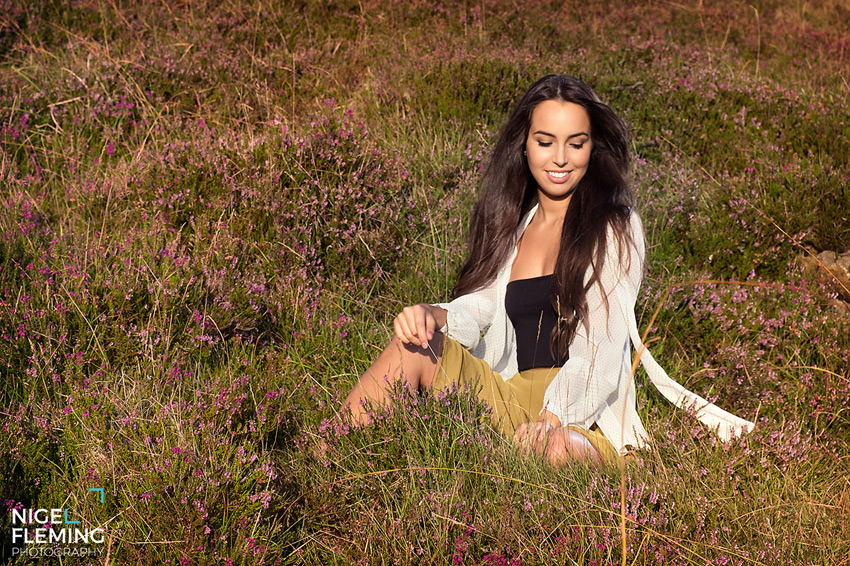 This was just back across the road again on the mountainside. The heather was in full bloom so it seemed a shame not to use it. Emily was lit with sunlight only, and a gentle breeze lifting her hair.
This was just back across the road again on the mountainside. The heather was in full bloom so it seemed a shame not to use it. Emily was lit with sunlight only, and a gentle breeze lifting her hair.
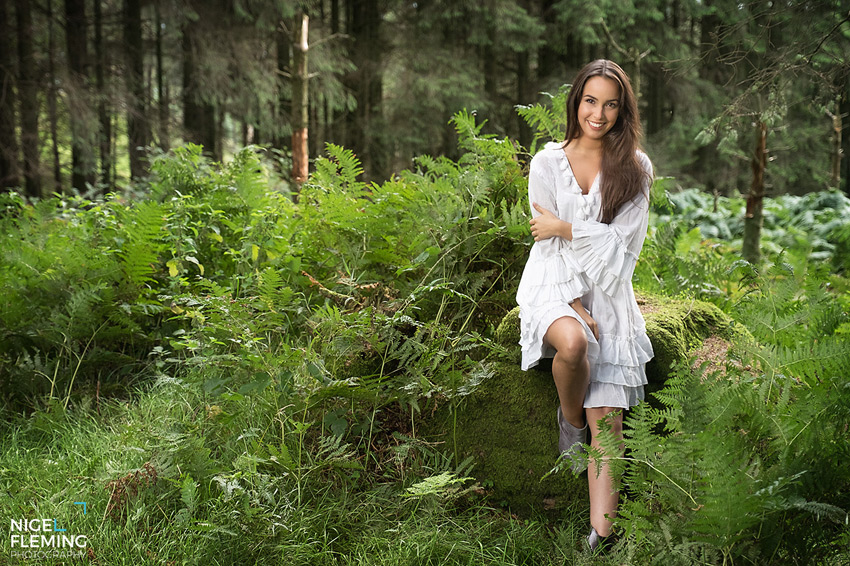 This was our final stop of the evening. The light on the fern was great here, and really saturating the colour. The light was low so this was f2.8 on the 16-55mm lens. ISO was 800 here also. This was a real test of ISO performance of the Fujifilm. There’s no doubt it’s considerably more grainy than my D3s and I wouldnt like to be going much beyond ISO800 on the Fujifilm. I’d happily go to ISO1600 and beyond on my Nikon D3s. It’s such a great low light camera.
This was our final stop of the evening. The light on the fern was great here, and really saturating the colour. The light was low so this was f2.8 on the 16-55mm lens. ISO was 800 here also. This was a real test of ISO performance of the Fujifilm. There’s no doubt it’s considerably more grainy than my D3s and I wouldnt like to be going much beyond ISO800 on the Fujifilm. I’d happily go to ISO1600 and beyond on my Nikon D3s. It’s such a great low light camera.
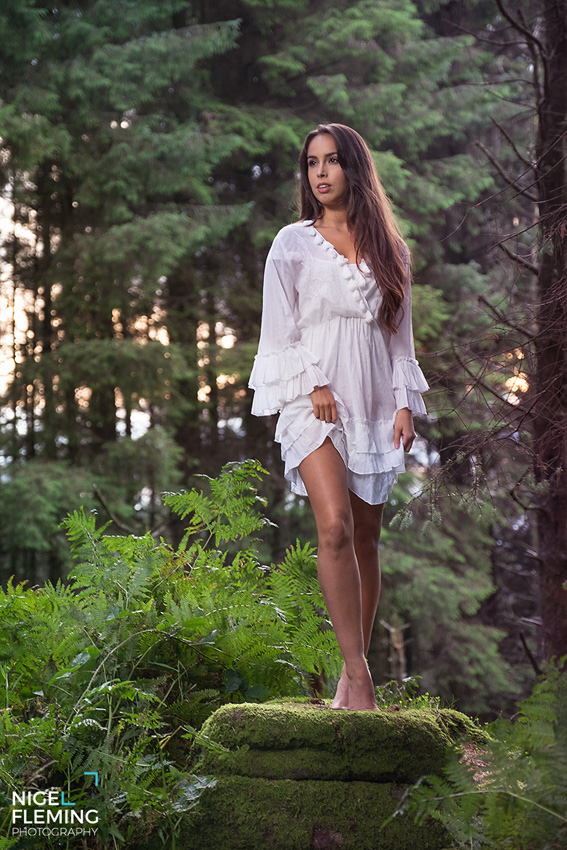 Last one of the evening. Settings and location as above.
Last one of the evening. Settings and location as above.
All of the above photos were in RAW file format. I decided to go for the Fujifilm Pro Neg Standard colour profile. This made the photos look great in camera, but of course this setting is stripped out by Lightroom when importing to computer. Lightroom however have replicated these various Fujifilm film simulations. I reapplied the Pro Neg Standard profile in Lightroom and I’m very happy with the results. This is another big plus for a Fujifilm X camera. I love these colour profiles (film simulations). Going back to my film days, I used Fujifilm regularly, and a roll of film by Fuji was widely regarded as great quality. Fuji had a series of film types available, depending on the look required. To use just one example, Fuji Velvia was legendary for landscape photography. These digital film simulations/colour profiles relive the days of the look of film and film choice.

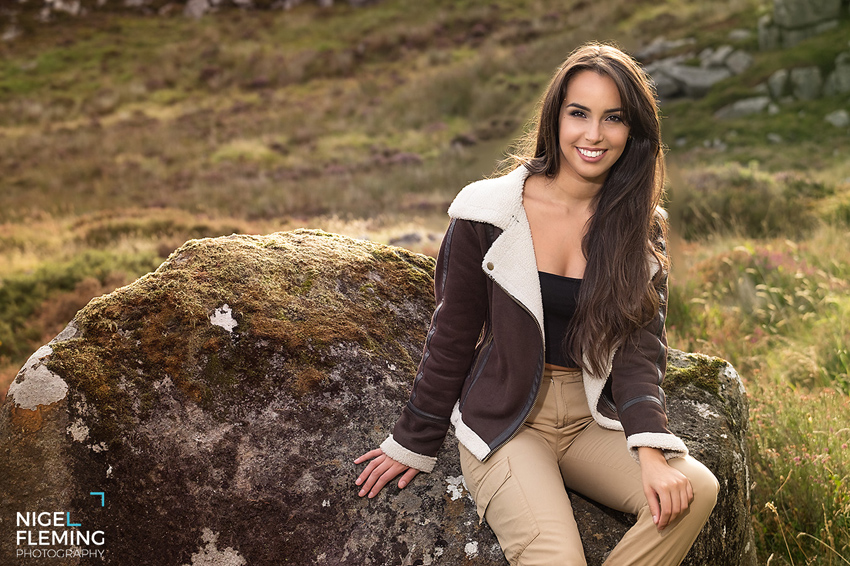
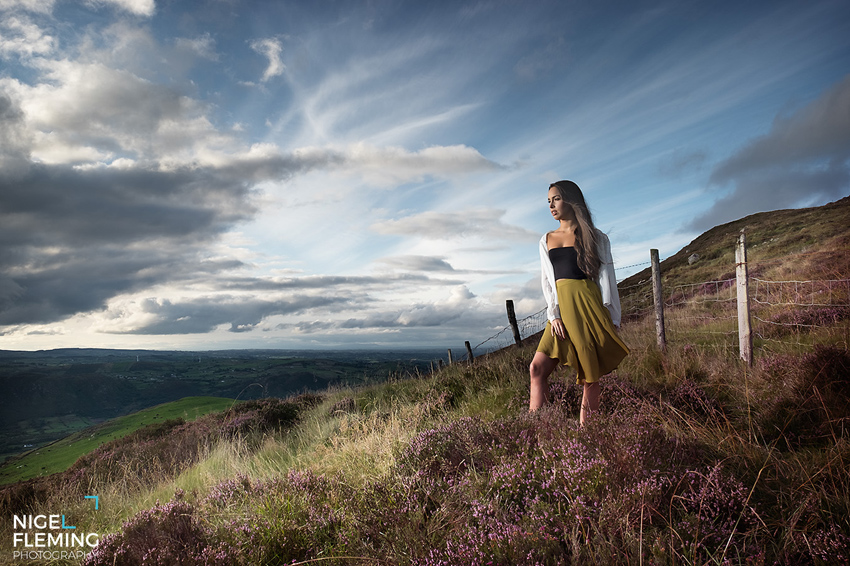
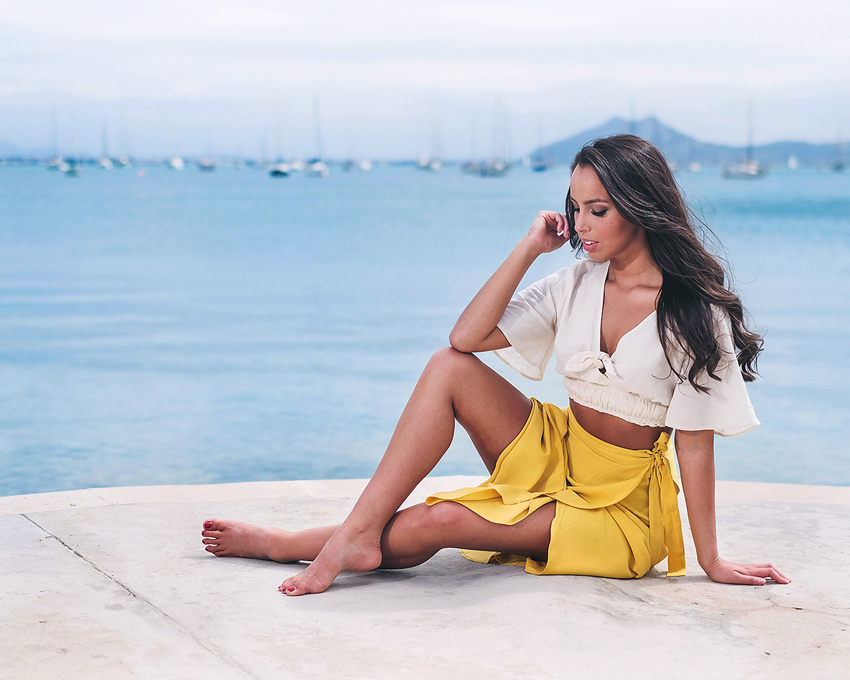
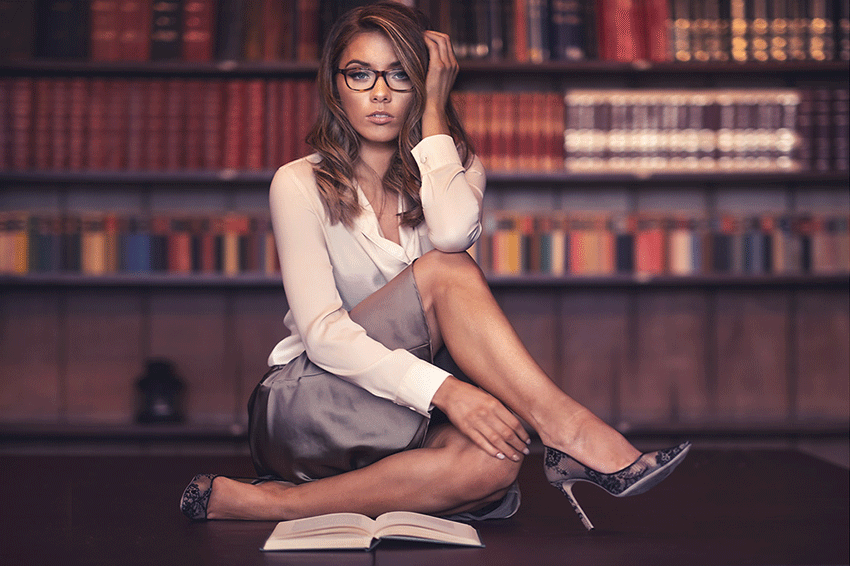
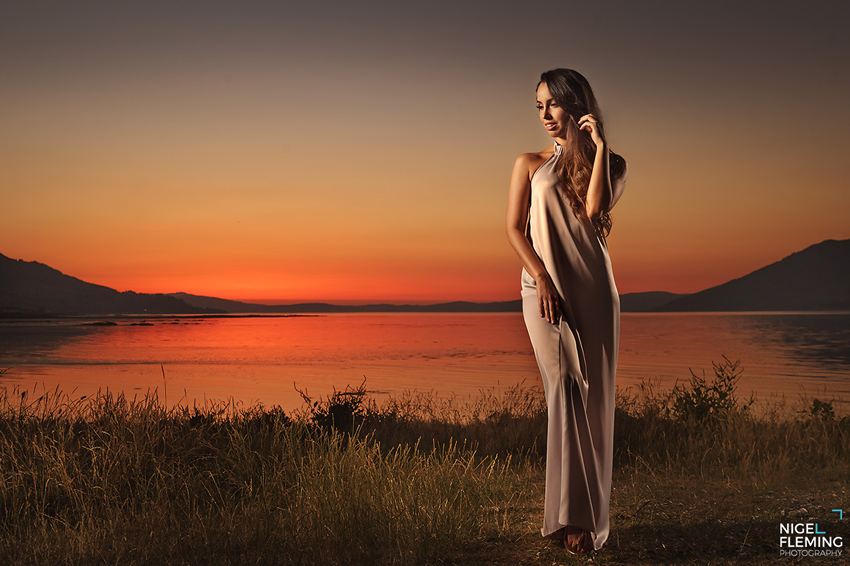
Brilliant review
Great review, the images looked great.